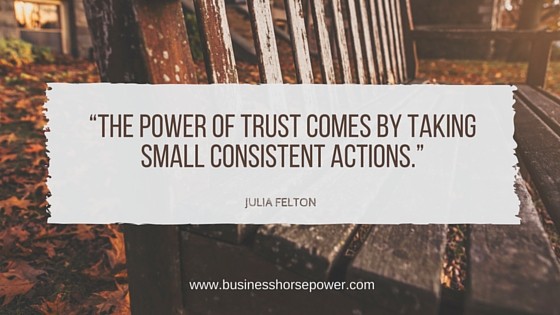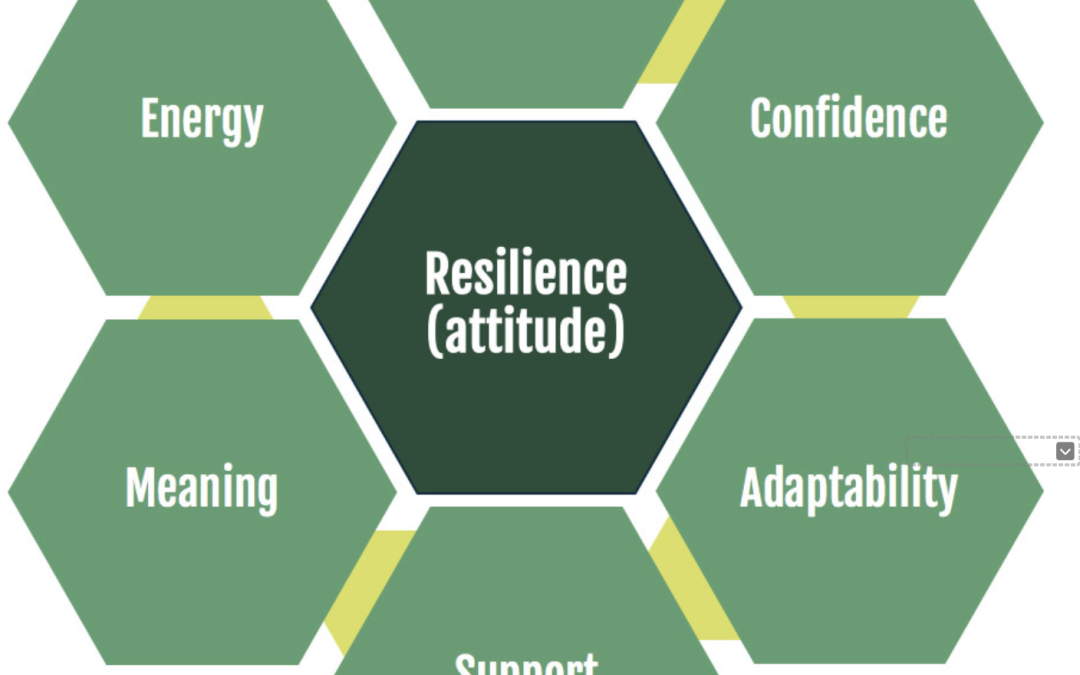
#44 – The Secrets to Creating and Sustaining High-Performance Teams
Hello, I’m Julia Felton, your guide for this week’s episode of Impactful Teamwork. Today, I want to share insights from my research on creating high-performance teams—particularly three key levers that help build an unstoppable team. These are teams that deliver exceptional productivity, enhanced performance, and deep engagement.
In today’s volatile business world, agility, adaptability, and resilience are no longer optional; they are essential for sustainable success. That’s why I’ve developed a blueprint inspired by nature—particularly lessons learned from horses—that provides a practical framework for conscious, trailblazing leaders like you to create and sustain high-performance teams.
Let’s explore these three levers and how they work in synergy to create truly unstoppable teams.
Lever 1: Building Game-Changing Trust
Trust is the foundation of any successful team. Without trust, collaboration falters, communication breaks down, and performance suffers. According to PwC, high-trust organizations experience 50% higher employee productivity and retain their top talent 76% more effectively than low-trust organizations. Clearly, trust isn’t just a nice-to-have—it’s a game-changer.
The Three Dimensions of Trust:
- Relational Trust – Built through personal connections. Leaders must demonstrate empathy, fairness, and care for team members as individuals. In a herd of horses, relational trust is evident when weaker or injured members are supported. Similarly, in business, leaders must make tough decisions to ensure the integrity of the team, even if that means letting go of underperformers who jeopardize the culture.
- Competence-Based Trust – Trust in a leader’s ability, knowledge, and decision-making. The lead mare in a horse herd earns her role by consistently making decisions that protect the group. In business, leaders must demonstrate expertise while also being transparent about what they don’t know.
- Structural Trust – Trust in the systems and culture of an organization. High-performing teams thrive when processes are fair, transparent, and designed to promote equity. Just like in a horse herd, where a structured yet flexible leadership system enables members to step up when needed, businesses must ensure their frameworks foster adaptability.
How to Build Trust:
- Be vulnerable, adaptable, and authentic.
- Follow through consistently on commitments.
- Demonstrate empathy through action.
- Be mindful of non-verbal communication—93% of communication is non-verbal, and your team, like a herd of horses, will pick up on your energy and intent.
Reflective Questions:
- How do you demonstrate trustworthiness in your leadership?
- What barriers to trust exist within your team, and how can they be addressed?
Lever 2: Energising the Team
Energy is the driving force behind every successful team. It fuels creativity, resilience, and execution. Gallup research shows that highly engaged teams see a 21% increase in profitability and a 17% increase in productivity.
Horses offer profound lessons in energy management. Their survival depends on balancing bursts of activity with restorative periods. Likewise, leaders must recognize when their teams are approaching burnout and when to revitalize collective energy.
The Four Dimensions of Energy:
- Physical Energy – The stamina to complete tasks. Leaders should promote well-being, encourage breaks, and support work-life balance. Horses conserve their energy and only expend it when necessary. In contrast, many business teams operate at full throttle without time to recover, leading to burnout.
- Emotional Energy – The positive emotions that drive motivation and collaboration. High-energy teams are resilient and optimistic. Leaders should foster appreciation and celebrate wins.
- Mental Energy – The ability to focus and adapt. Business leaders struggle with attention deficit due to constant distractions. Research shows that when interrupted, it takes 20 minutes to regain peak productivity. Leaders should protect their teams from unnecessary meetings and encourage deep work periods.
- Spiritual Energy – The sense of purpose that drives people to go above and beyond. Leaders must align team members’ daily work with a greater mission, reinforcing how their contributions impact the broader business vision.
How to Optimize Energy:
- Schedule demanding tasks during peak performance times.
- Integrate recovery periods and reflection into team routines.
- Introduce activities like team-building days to boost collective energy.
Reflective Questions:
- How do you recognize and address energy depletion in your team?
- What strategies can you implement to optimize physical, emotional, mental, and spiritual energy?
Lever 3: Cultivating Curiosity
Curiosity is the catalyst for reinvention. It’s the gateway to learning, growth, and adaptability. Unlike pure innovation, which focuses on creating something new, reinvention leverages existing strengths to uncover fresh opportunities.
Harvard Business Review found that curiosity increases organisational engagement and adaptability by 34%. Just as horses explore their environment to detect threats and opportunities, teams that embrace curiosity unlock new possibilities for success.
How to Foster Curiosity:
- Encourage Questioning – Leaders should model curiosity by asking open-ended questions and welcoming diverse perspectives. Employees should feel safe to ask “why” and “what if” without fear of judgment.
- Build Psychological Safety – Curiosity flourishes in environments where people feel safe to express ideas and experiment. Teams must trust that failures will be viewed as learning experiences rather than punishments.
- Promote Exploration – Give team members opportunities to stretch outside their comfort zones through cross-functional projects and training. Google’s innovation days—where employees work on passion projects—led to the creation of Gmail and Google Maps.
How to Remove Barriers to Curiosity:
- Encourage experimentation and celebrate learning moments.
- Reduce rigid structures that stifle creative thinking.
- Offer “reinvention days” for employees to explore new ideas.
Reflective Questions:
- How do you encourage curiosity within your team?
- What barriers exist to curiosity in your company, and how can they be removed?
Creating Synergy: Trust, Energy, and Curiosity
When combined, these three elements create a powerful synergy:
- Trust establishes the foundation for collaboration and communication.
- Energy provides the drive to execute strategies and maintain momentum.
- Curiosity fuels reinvention and adaptability.
Together, these levers help business leaders develop teams that are agile, resilient, and unstoppable. Many leaders struggle with maintaining consistent business momentum, but by leveraging trust, energy, and curiosity, they can ensure their teams stay in motion and avoid stagnation.
Final Reflection:
- Which of these three levers is strongest within your team?
- Which one requires the most attention?
- How can you apply lessons from nature and horses to your leadership practice?
If you’re ready to explore how to build a turbocharged team, I’d love to connect. Whether you want to experience equine-assisted leadership training or implement our proven blueprint within your organisation, let’s have a conversation.
Wishing you an impactful week ahead, and I look forward to connecting again soon!
Show Notes:
Here are the highlights from this episode:
00:00 Introduction to Impactful Teamwork
01:26 The Importance of High-Performance Teams
03:45 Building Game-Changing Trust
12:13 Energizing Your Team
19:21 Fostering Curiosity for Reinvention
23:37 Conclusion and Reflective Questions

Julia Felton (aka The Business Wrangler) is the founder of Business HorsePower. Business leaders, entrepreneurs and executives hire her to accelerate their business performance by harnessing the energy of their people to work more collaboratively together. By aligning purpose with actions the team achieves exponential results as everyone starts pulling in the same direction.
Julia believes that business is a force for good and through designing purpose-driven businesses that leverage the laws of nature, and the herd, you can create businesses founded on the principles of connection, collaboration and community that make a significant impact in the world.














